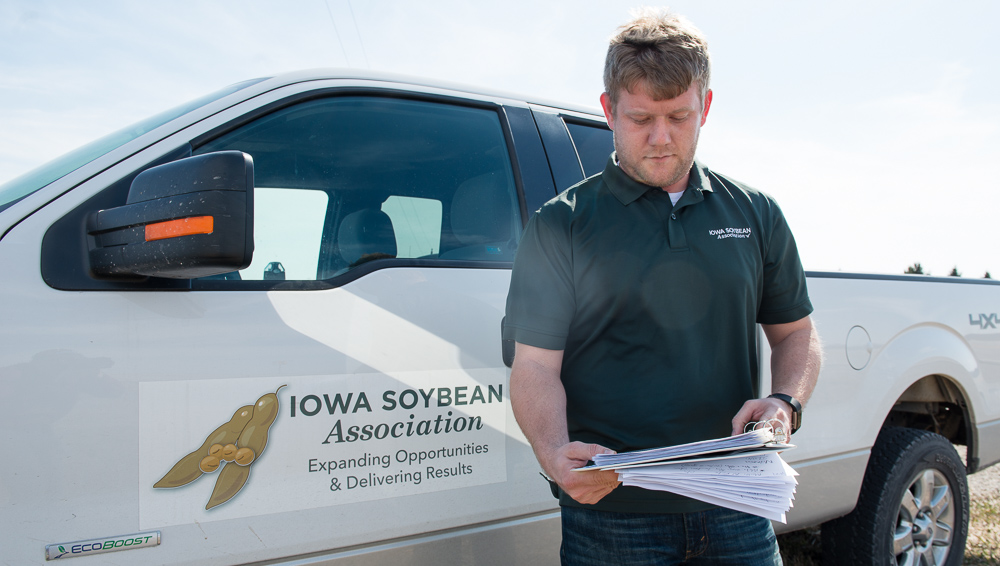
Researchers looked to the skies in a new and novel research project with the Iowa Soybean Association’s (ISA) Research Center for Farming Innovation (RCFI). (Photo: Joseph L. Murphy/Iowa Soybean Association)
Drones hold promise for crop application efforts
January 14, 2021
Researchers looked to the skies in a new and novel research project with the Iowa Soybean Association’s (ISA) Research Center for Farming Innovation (RCFI).
Focused in southeast Iowa, ISA Field Service Manager Anthony Martin worked with area contract applicators using Rantizo, an agricultural drone spraying platform. Foliar products in fungicide, insecticide, and zinc were applied in late July and early August as first or second pass applications for given projects.
Using this system for replicated strip trials proved to be easy as one of the features is the ability to provide prescription maps the drone would apply. While other aerial application methods can provide some coverage to a predetermined area, the autonomous drone is pre-programmed to apply only in the designated area, providing for more precise application areas and lower chemical use to areas not targeted for application. Layering this type of precision in conjunction with mapping services may help farmers avoid over application to unstressed areas of the field.
In a single trial, strips of Delaro fungicide and insecticide were applied with a sprayer (66.5 bushels per acre) next to drone-applied (67.0 bushels per acre) and an Untreated Check (64.1 bushels per acre). From this single site, a few observations can be shared:
- Overall, there was virtually no difference between the application methods which we would consider a positive outcome.
- One of the benefits and goals of using drones is to have the variable rate capabilities and focus application efforts to those stressed areas instead of entire fields.
- Initial yield results and comparisons showed areas where applying no fungicide would have been the best option, indicating the potential for a variable application.
- This effort focused on one site and more work will need to be done, specifically seeking a comparable ground method.
This was the first season of working with a drone application project and ISA field service managers are looking forward to learning more with future efforts. Drones can fly close to the crop, providing good coverage and reducing some drift often seen in other application methods. Additionally, these drones can be equipped with dry spreaders for potential fertilizer or cover crop applications.
While the drone system shows great potential for farmers around the state, there are considerations when looking at utilizing the technology. This approach has strong potential for farmers operating uneven and irregular shaped fields with terraces and point rows, but larger fields may be limited to spot applications or simply covering boundary rows. In addition, a contractor using a single drone is limited to the device’s battery life and tank space.
Presently, these drones can cover approximately 100 acres in a single day, but the ability to cover more acres will continue to improve as new technology is developed. A notable achievement in this space was the recently approved use of swarming or using multiple drones for applications.
To learn more, contact Anthony Martin, ISA senior field services manager, who contributed to this story.
Back